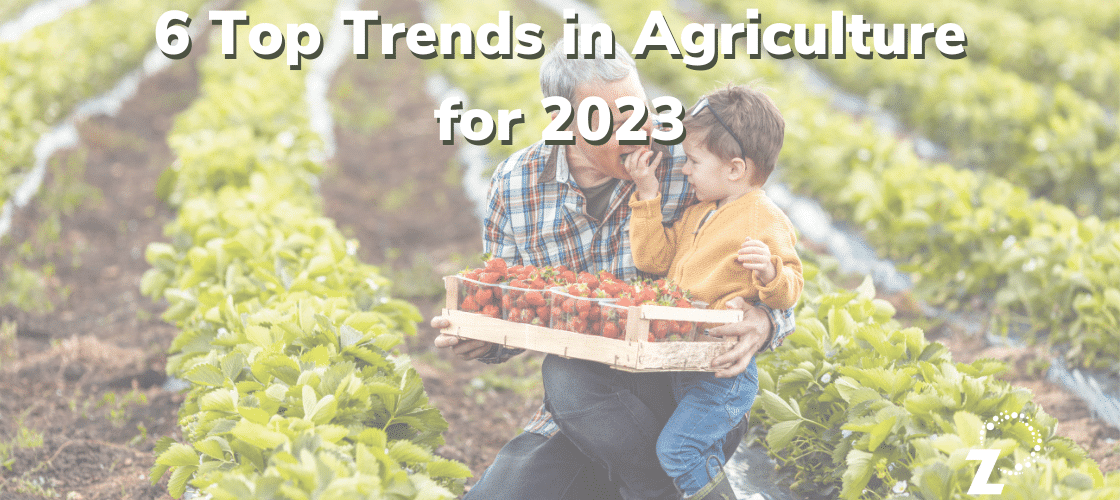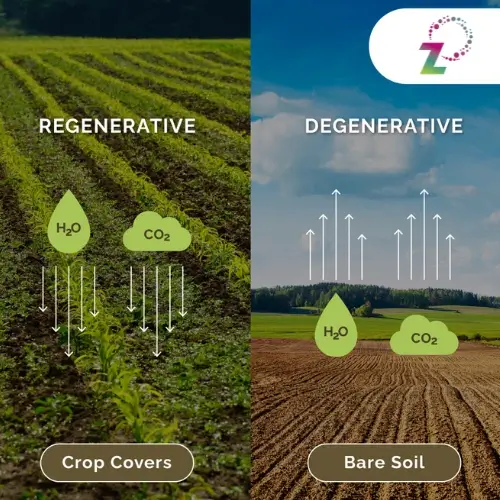
- Justin Platt
- No Comments on 6 Top Trends in Agriculture for 2023
RegenZ Founder Justin Platt Lists His 6 Top Agricultural Trends
As a major agricultural producer and exporter, South Africa’s agricultural industry plays an essential role in the country’s economy. But it comes with a significant footprint on resources such as water, energy, nutrients, soil and natural cycles. Then there’s the impact of dealing with climate change while tasked with feeding a growing population.
To reduce our environmental impact while increasing agricultural productivity, we’ll need urgent innovations in agriculture and food production. The need for transformation forms the basis of the top trends I predict in agriculture in 2023.
#1 An awareness of circular agriculture
Circular agricultural principles focus on producing agricultural commodities using minimal external inputs, regenerating soils, closing nutrient loops, and minimising environmental impact. In 2023, and in the decades to come, the South African agriculture sector will need to implement circular economy interventions. The alternative—following a resource-intensive, linear growth path and focusing on short-term efficiency—will ultimately put national food security at risk. By adopting circular economy principles, agricultural businesses can become more competitive, economically viable, and sustainable in the long term.
#2 Multi-species cover crops

The modern agricultural practice of monocropping has replaced the traditional, pre-industrial method of growing multiple crops on a piece of land. But growing only one crop on the same piece of land results in soil degradation and soil productivity losses, which is further exacerbated by the increased use of chemical fertilisers and synthetic pesticides with each harvest. These increased inputs mean increased costs for the farmer, and so the cycle continues. But South African farmers are starting to understand the benefits of incorporating multi-species cover crops
#3 Minimising tillage
Minimising (or moving to zero) tillage means that crops are sown directly into the soil without any land preparation between harvest and sowing. The benefits include increased biodiversity and improved soil health and crop productivity as organic material builds up in the upper layer of the soil. South African farmers are moving towards this regenerative approach: a study by international researchers revealed that no-till/conservation agriculture (CA) acreage grew over 336% in South Africa from 2009-2019.
#4 Plant sap testing
Soil testing has long been an important part of data-driven farming, and modern farmers are adding plant sap analysis to the mix. Plant sap testing is like a blood test for plants; it provides real-time data on plant health to allow farmers to:
- Minimise the unnecessary application of inorganic fertilisers
- Detect and address nutrient deficiencies an average of four weeks before they can be seen to the naked eye
- Nurture crops to peak health and yields
- Decrease pests and diseases
This new testing technology provides a far more accurate picture of what is happening inside a plant and can save farmers thousands in fertiliser costs. As the technology continues to become more accessible and readily available, more and more agricultural operations will be able to use the data from plant sap testing to improve their operations.
#5 Applying organic-based foliar products
Using organic-based fertilisers helps close nutrient loops and reduces the need for mineral fertilisers. Foliar feeding supplies plants with their nutritional needs by spraying nutrients directly on the leaves, thus correcting any deficiencies in the soil. Foliar spraying also helps farmers overcome soil fertilisation limitations such as leaching, antagonism between certain nutrients and absorption reactions.
It’s been proven that the foliar spraying method is the fastest way to cure nutrient deficiencies and boost plant performance. As a result, more and more farmers are realising its benefits. As an example, as little as 5kg/ha urea added to an organic-based foliar application will give a visible response within 24 hours and result in an increased Brix reading (increased nutrient sap density) within two hours.
#6 A change in mindset
Adopting more sustainable and regenerative agricultural practices requires farmers to make a distinct paradigm shift that leads to new principles, philosophies, and, ultimately, different practices; a change which I’m starting to notice more and more of. Let’s be honest; money talks. And when farmers are faced with high input costs due to degrading soil health, they start to want to make a change. I can only hope that the public, private and nonprofit sectors will continue to offer awareness-creation initiatives for alternatives to agrochemical inputs and sustainable farming measures.
In short, I believe that any investment in improving organic matter and soil health is the best investment a farmer can make. South African farmers are increasingly realising that, in order to make their farms future-ready, they need to adopt these key trends and work towards a more regenerative approach.

About the Author: Justin Platt
Justin is the Founder & CEO of Zylem and RegenZ. Justin has a BSc in Plant Pathology and Botany from UKZN. He has been involved in the agricultural services industry since graduating in 1979. Justin has a passion for regenerative agriculture.